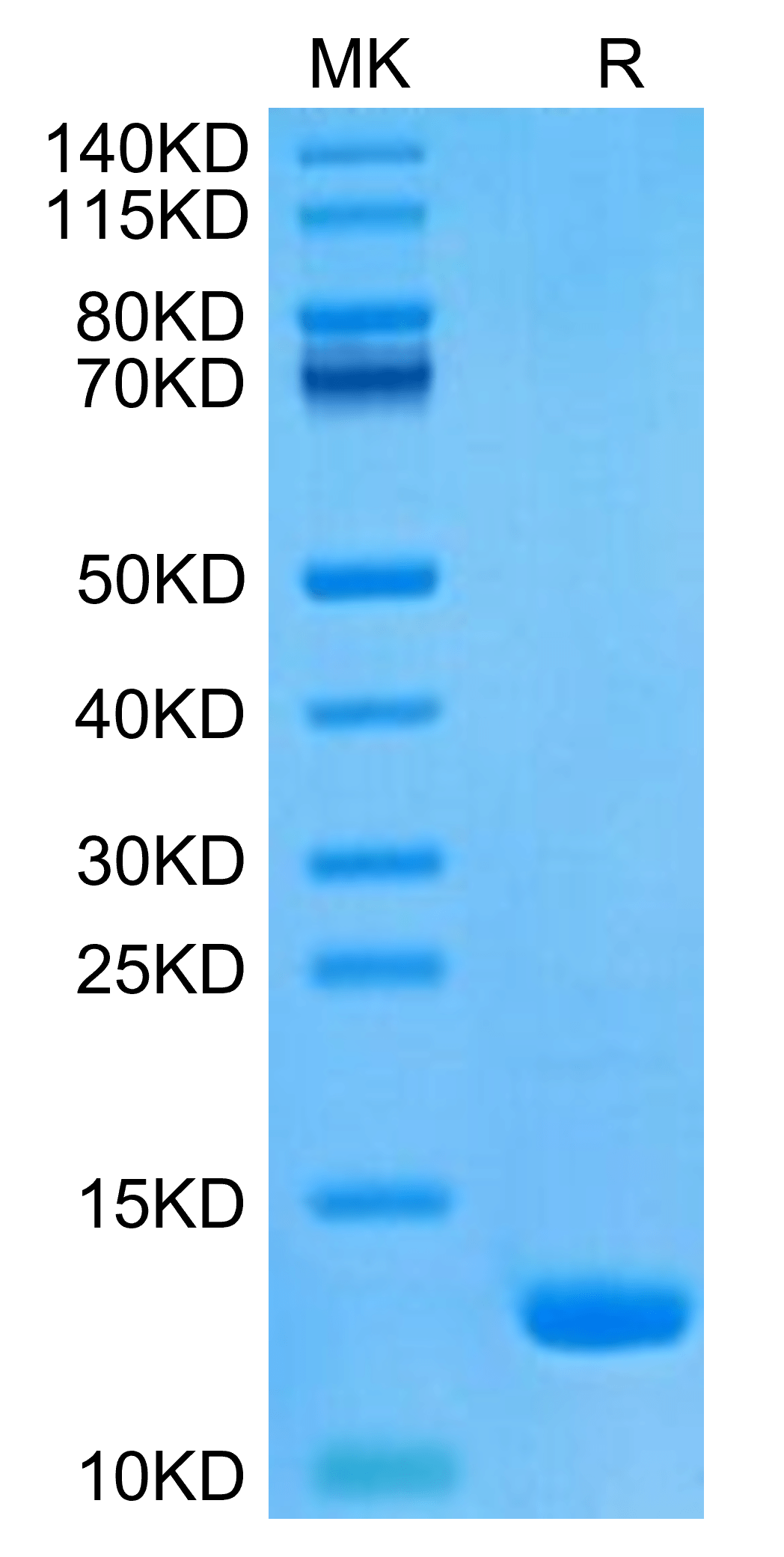| Weight | 1 lbs |
|---|---|
| Dimensions | 9 × 5 × 2 in |
| accession | P80075 |
| express system | E.coli |
| product tag | No Tag |
| purity | > 95% as determined by Tris-Bis PAGE |
| background | C-C motif Chemokine ligand 8 (CCL8) has been found in diseases' pathogenesis. Exogenous CCL8 enhanced the proliferative and migration potential of LE cells and their motility in the environment with its stable concentration.of all the examined factors, chemokine CCL8 participates in the establishment of a proper environment for embryo implantation. |
| molecular weight | The protein has a predicted MW of 8.91 kDa. The protein migrates to 12-14 kDa based on Tris-Bis PAGE result. |
| available size | 100 µg, 500 µg |
| endotoxin | Less than 1EU per μg by the LAL method. |
Human CCL8 Protein 3114
$300.00 – $1,000.00
Summary
- Expression: E.coli
- Pure: Yes (SDS-PAGE)
- Amino Acid Range: Gln24-Pro99
Human CCL8 Protein 3114
| protein |
|---|
| Size and concentration 100, 500µg and lyophilized |
| Form Lyophilized |
| Storage Instructions Valid for 12 months from date of receipt when stored at -80°C. Recommend to aliquot the protein into smaller quantities for optimal storage. Please minimize freeze-thaw cycles. |
| Storage buffer Shipped at ambient temperature. |
| Purity > 95% as determined by Tris-Bis PAGE |
| target relevance |
|---|
| C-C motif Chemokine ligand 8 (CCL8) has been found in diseases' pathogenesis. Exogenous CCL8 enhanced the proliferative and migration potential of LE cells and their motility in the environment with its stable concentration.of all the examined factors, chemokine CCL8 participates in the establishment of a proper environment for embryo implantation. |
| Protein names C-C motif chemokine 8 (HC14) (Monocyte chemoattractant protein 2) (Monocyte chemotactic protein 2) (MCP-2) (Small-inducible cytokine A8) [Cleaved into: MCP-2(6-76)] |
| Gene names CCL8,CCL8 MCP2 SCYA10 SCYA8 |
| Protein family Intercrine beta (chemokine CC) family |
| Mass 9606Da |
| Function Chemotactic factor that attracts monocytes, lymphocytes, basophils and eosinophils. May play a role in neoplasia and inflammatory host responses. This protein can bind heparin. The processed form MCP-2(6-76) does not show monocyte chemotactic activity, but inhibits the chemotactic effect most predominantly of CCL7, and also of CCL2 and CCL5 and CCL8. |
| Subellular location Secreted. |
| Tissues Highest expression found in the small intestine and peripheral blood cells. Intermediate levels seen in the heart, placenta, lung, skeletal muscle, thymus, colon, ovary, spinal cord and pancreas. Low levels seen in the brain, liver, spleen and prostate. |
| Structure Monomer or homodimer; in equilibrium. |
| Post-translational modification N-terminal processed form MCP-2(6-76) is produced by proteolytic cleavage after secretion from peripheral blood monocytes. |
| Target Relevance information above includes information from UniProt accession: P80075 |
| The UniProt Consortium |
Publications
Publications
| pmid | title | authors | citation |
|---|---|---|---|
| We haven't added any publications to our database yet. | |||
Protocols
| relevant to this product |
|---|
Documents
| # | ||
|---|---|---|
| Please enter your product and batch number here to retrieve product datasheet, SDS, and QC information. | ||















